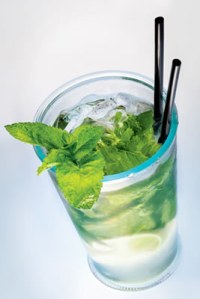 Read on for tips on how you can prepare for your final exam.
Read on for tips on how you can prepare for your final exam.
The State of Nevada’s Commission on Postsecondary Education requires that students pass a supervised exam with a 75% or better before being issued an Alcohol Education Card. What does that mean for you? If you complete your TAM® training online you must physically go to the provider’s approved school location to take a proctored exam after finishing the online training. If you opted to complete the course in a classroom setting you will take a test immediately following the training session.
Are you nervous about taking and passing a test? Fear not! TAM® of Nevada has been helping students prepare for their exams for over 25 years. Before you come in to our official training to obtain your TAM Card, read on for more tips on making sure you’re prepared to pass with flying colors. Rest assured the training you’ve completed with TAM® will leave you prepared to ace your exam, and excel at practicing safe beverage service techniques on the job.
How long is the exam? The exam is 25 questions. It takes approximately 15 minutes for you to take your exam and have your picture taken for your TAM Card. Most students find the test to be a breeze after participating in TAM training; all questions are a review of the material you covered during the course.
Is there a Practice Test? You bet! Students who elect to complete TAM® Card online training will take a practice test at the end of their online training. This is one of the best ways to prepare for your proctored exam; you’ll get an idea of the types of questions that will appear on your final exam and have the chance to complete a final review before taking the real thing. If you’re planning to wait a few days to take your proctored exam, you can refresh your memory on the material covered by going through the TAM Student Manual before leaving for our office.
What if I take a classroom course? Traditional classroom training will leave you equally prepared for your test as the online option. Feel free to take notes and ask questions during the class. Our instructors are there to help and make sure you’re comfortable with all of the material. They love being able to answer questions and discuss the particulars of safe beverage service with students!
Relax! Take a deep breath and focus on the questions. You’ll do great!
What other ways do you like to prepare before taking an exam?
Resources
Nevada Commission on Postsecondary Education
© 2011 National Hospitality Institute®, TAM® of Nevada

 It’s considered rude to talk on your cell phone at the dinner table, but in an increasingly tech-savvy world and competitive dining industry, restaurants are breaking their own rules. Samantha Murphy of Tech News Daily explored some of the newest technology trends popping up in restaurants in her article, “
It’s considered rude to talk on your cell phone at the dinner table, but in an increasingly tech-savvy world and competitive dining industry, restaurants are breaking their own rules. Samantha Murphy of Tech News Daily explored some of the newest technology trends popping up in restaurants in her article, “ As a server or bartender, you’re often the first, and last, staff member a customer encounters. Your interactions will set the tone for the evening so you want to greet your customers warmly, and leave them reflecting on a positive experience once they head for the door. You only get one chance to make a first impression, so make sure it’s a solid one. Professionalism and competence are very important, but so is projecting a great attitude and body language.
As a server or bartender, you’re often the first, and last, staff member a customer encounters. Your interactions will set the tone for the evening so you want to greet your customers warmly, and leave them reflecting on a positive experience once they head for the door. You only get one chance to make a first impression, so make sure it’s a solid one. Professionalism and competence are very important, but so is projecting a great attitude and body language. People have been mixing drinks to suit their tastes for centuries. In fact, many of the most popular and well known drinks requested by bar patrons today were first created by bartenders decades ago. Ever wonder about the history behind these classic cocktails? Being able to explain the origin of a mixed drink makes for great conversation with your patrons. The origin of many popular cocktails remains elusive, often with multiple sources claiming credit. Others can be traced back to a particular mixologist or bar. While several cocktails have more stories about their origins than ingredients in the actual drink, here are a few we can help pinpoint for you:
People have been mixing drinks to suit their tastes for centuries. In fact, many of the most popular and well known drinks requested by bar patrons today were first created by bartenders decades ago. Ever wonder about the history behind these classic cocktails? Being able to explain the origin of a mixed drink makes for great conversation with your patrons. The origin of many popular cocktails remains elusive, often with multiple sources claiming credit. Others can be traced back to a particular mixologist or bar. While several cocktails have more stories about their origins than ingredients in the actual drink, here are a few we can help pinpoint for you: